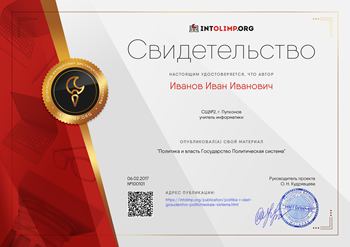Brief information about aluminum production
Abstract: Despite the fact that aluminum is the most widespread metal on our planet, it cannot be found in its pure form on Earth. Due to the high chemical activity, aluminum atoms easily form compounds with other substances. In this case, "winged metal" cannot be obtained by melting ore in a furnace, as happens, for example, with iron. The process of obtaining aluminum is much more complicated and is based on the use of electricity of enormous power. Therefore, aluminum smelters are always built close to large sources of electricity - most often hydroelectric power plants that do not pollute the environment. But first things first. Metal production is divided into three main stages: the extraction of bauxite - an aluminum-containing ore, their processing into alumina - aluminum oxide, and, finally, the production of pure metal using the electrolysis process - the decomposition of aluminum oxide into its constituent parts under the influence of an electric current. From 4-5 tons of bauxite, 2 tons of alumina are obtained, from which 1 ton of aluminum is produced. There are several types of aluminum ores in the world, but bauxite is the main raw material for the production of this metal. It is a rock, consisting mainly of aluminum oxide with an admixture of other minerals. Bauxite is considered good quality if it contains more than 50% aluminum oxide. The world's total proven bauxite reserves are estimated at 18.6 billion tonnes. At the current level of production, this provides the need for aluminum for more than a hundred years. Bauxites can be very different from each other. In structure, they are hard and dense or loose and crumbly. In color - as a rule, brick-red, reddish or brown due to the admixture of iron oxide. With a low iron content, bauxites are white or gray. But sometimes there are ores of yellow, dark green color and even variegated - with blue, red-violet or black veins. About 90% of the world's bauxite reserves are concentrated in the countries of the tropical and subtropical belts - of which 73% are in five countries: Guinea, Brazil, Jamaica, Australia and India. In Guinea, bauxites are the most - 5.3 billion tons (28.4%), while they are of high quality, contain a minimum amount of impurities and lie almost on the surface.
Keywords-- aluminum, mass fraction, metallic, alumothermy, hydroxide, separation, electrolyser, oxidation process, cathode, oxide, metallurgy, vacuum, electrolyser, anode.
Al is the most abundant metal in nature with a mass fraction of 7.45% in the earth's crust. Melting temperature Tm = 660 ° C; Boiling point Tboil = 2500 ° С; Density of metallic aluminum D = 2.7 g / cm3; electrode potential E ° = - 1.66 Volts, the first time in 1825 X.K. Oersted invented aluminum.
Minerals:
Kaolin: Al2O3* 2SiO2 *H2O
Corund: Al2O3
Bauxite: Al2O3* nH2O
Orthoclase: K2O *Al2O3 *2H2O (i.e. feldspar)
Nepheline: Na2O *Al2O3 *2SiO2
If a mixture of metallic aluminum (Al) and iron oxides (FeO + Fe2O3) is applied to a metal wire heated to high temperatures, a very intense exothermic reaction occurs:
8Al + 3Fe3O4 = 4Al2O3 + 9Fe + 3300 kJ
As a result of the reaction, the mixture spontaneously heats up to 3500 ° C. At this temperature, the metals being welded melt.
A mixture of metallic aluminum and magnetite (8Al + 3Fe3O4) is called thermite in engineering and is sometimes used in metal welding.
The process of reducing metals from their oxides with aluminum in metallurgy is called alumothermy.
Aluminothermy was first discovered by the Russian scientist N.N.Beketov. Aluminothermy is used in the metallurgical industry to extract metals such as Cr, Mn, V, Zr, Ti from their oxides.
Duralumin alloy is as strong as steel, but 3 times lighter. The German scientist F. Wöhler obtained Al in 1827 using the following method:
AlCl3 + 3K = Al + 3KCl
Aluminum production processes
Although aluminum is the most common metal, it is difficult to separate it from its compounds. Since aluminum is an active metal, it is produced by the electrometallurgical method. To do this, you first need pure alumina (Al2O3). There are several ways to separate alumina from soil, the most effective of which is the Bayer method. According to the Bayer method, aluminum ore is first treated with strong alkalis with a concentration of 300 g / l and selectively melted in reactors (for example, in an autoclave) at a temperature of 120 oC:
Al2O3 + 2NaOH + 3H2O = 2Na [Al (OH) 4]
(sodium tetrahydroxoaluminate)
The resulting solution is filtered, in which the solid residue containing iron, after separation of the aluminum solution, is called red mud.
The resulting filtrate is precipitated from the solution by hydrolysis of aluminum hydroxide, bringing the hydrogen content in the solution to a neutral medium (pH = 7):
Na [Al (OH) 4] = Al (OH) 3 ↓ + NaOH
The obtained aluminum hydroxide is heated in a rotary kiln (at 200 - 400 oC) for drying (dehydration process):
Al (OH) 3 = AlOOH + H2O (aluminum metahydroxide)
2AlOOH = Al2O3 + H2O
The material obtained by this method contains 90-95% alumina (Al2O3), which is also technically called alumina (if it is 100% alumina, it is called corundum). The resulting alumina is electrolyzed by adding rapidly dissolving fluxes (Na3 [AlF6], AlF3, NaCl, NaF, KCl).

The scheme of obtaining alumina (clay) by the Bayer method
Electrolysis process: Al is produced by electrothermal method. In this case, aluminum oxide, Al2O3, dissolves in molten cryolite (Na3AlF6). A small amount of AlF3 is added to this melt. This electrolyte conducts electricity well.

Loading alumina into the electrolyzer
The electrolysis is carried out at a temperature of 950 °C. A direct current with a voltage of 5-8 volts and with a current of up to 80,000 A (amperes) is passed through the melt. Al is reduced at the cathode and oxygen (O2) is released at the anode, and the resulting O2 interacts with the carbon based anode (the furnace wall acts like a cathode and this is made of carbon):
At the cathode: Al⁺³ + 3ē = Al ° (reduction process)
At the anode: 2O⁻² -4ē = O2; O2 + C = CO2 ↑ (oxidation process)
The electrolyser used in industry is made of steel, the inside of which is covered with charcoal, a layer of charcoal connected to the negative pole and acts as a cathode. Thick carbon plates (or electrodes) that are lowered into the melt from above act as anodes. During electrolysis, the electrodes are oxidized and destroyed by oxygen. Therefore, the graphite electrodes are periodically replaced. The electrolyser runs continuously. Al2O3 is also continuously fed into the electrolyzer. Every 2-3 days, the formed metallic liquid Al is evacuated in vacuum equipment.
The resulting aluminum metal contains accompanying elements such as iron and silicon. In the next step, it is purified by repeated melting and electrolysis. During the production of aluminum, fluorine (F2) and its compounds are emitted into the atmosphere as a toxic gas. This pollutes the environment with toxic fluorine compounds.
The production of aluminum requires a lot of electricity: for example, to produce 1 ton of aluminum ingots (in the form of ingots), 1920 kg of alumina, 65 kg of cryolite, 35 kg of aluminum fluoride, 600 kg of graphite anodes and 2000 kWh of electricity are required.
Therefore, today the development of a cheaper and environmentally friendly technology for the production of aluminum remains one of the urgent problems of metallurgy.

Diagram of electrometallurgical separation of aluminum
Liquid aluminum obtained after the electrolysis process is re-purified in a vacuum furnace and poured into special molds to obtain various castings.

Ingot in the form of aluminum casting







